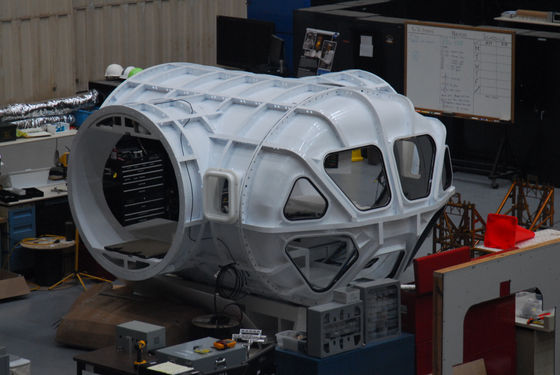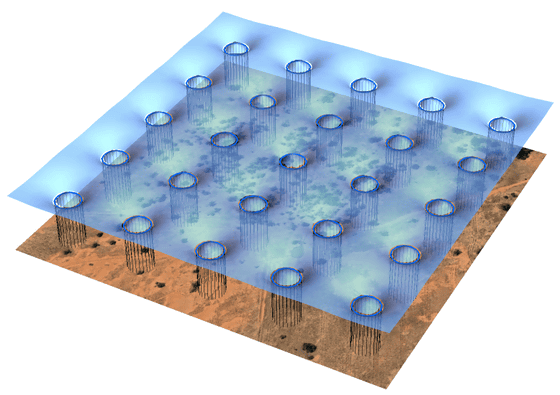The `` dome-shaped space base '' often found in science fiction works is not realistic

by
In science fiction works such as games and movies, bases built on the moon and Mars are often drawn in a “dome shape”. However, Casey Handmer, who is a specialist on hyperloops and publishes books on Mars exploration, etc. points out that 'the dome-shaped space base looks cool but is not realistic .'
Domes are very over-rated – Casey Handmer's blog
https://caseyhandmer.wordpress.com/2019/11/28/domes-are-very-over-rated/
Mr. Handmer first started discussions about the purpose of the space base as “self-sufficient on that planet”. Limiting the story to the base construction on Mars, the surface of Mars is thin and the average temperature is minus 43 degrees, and the equipment and building materials that can be carried by rocket from the earth are limited. Therefore, the base construction on Mars has the restriction of “building a self-sufficient system before exhausting resources brought from the earth”.

By
When starting farming and industry for self-sufficiency on Mars, space suits require limited space for workability, as space suits have limited work efficiency. Modern factories are mostly single-story rather than multi-story from the viewpoint of work efficiency. Considering that land can be used freely on Mars in the early days of reclamation, Mr. Handmer assumes that Mars base should be one story.
The problem that occurs when such a Mars base is made dome-shaped is the strength of the dome. The shape of the dome is maintained by the internal air pressure. However, Mr. Handmer pointed out that 'even the dome of a general house size leaks air and heat from the joint.' The lift applied to the dome is proportional to the area of the dome, and the force applied to the joint with the ground is proportional to the circumference of the dome. Mr. Handmer concludes by calculation that “a dome with a diameter of 150 feet or more on Mars cannot be built”.
Also, because of its shape, the dome base cannot be expanded once it has been built. Therefore, if necessary, another dome-shaped base must be built. In that case, the 'connection between bases' is also a problem. The connection part must be an opening that matches the wall surface of the dome, and is large enough to allow a large vehicle such as a truck to pass through. It is also necessary to install a bulkhead to prevent it. Mr. Handmer describes the structure of these connections as an “engineering nightmare”.

By
So, what type of Mars base is the best, Mr. Handmer said, “I thought something like a stone-built huge safe was the best, but recently I think that buildings using tensile structures are the best. Has been revised. ” The dome is also a structure that uses a tension structure, but Mr. Handmer is thinking of building iron cable pillars at regular intervals. Below is an image of the building that Mr. Handmer has released as a concept.

Mr. Handmer insists that this shape is excellent in expandability and durability. As a building material, Mr. Handmer recommended a polymer called “

By Olli ruhr
Mr. Handmer argues that it is appropriate to use Mars's ground directly on the floor part because it is not possible to avoid leaking pressure even if building materials are spread on the floor and the land of Mars can be used as farmland .
Also, the plan to use the natural topography of Mars and the plan to dig the ground and build a base underground requires a huge amount of labor and energy for drilling, and it is difficult to use natural light is.
Related Posts:
in Science, Posted by darkhorse_log







